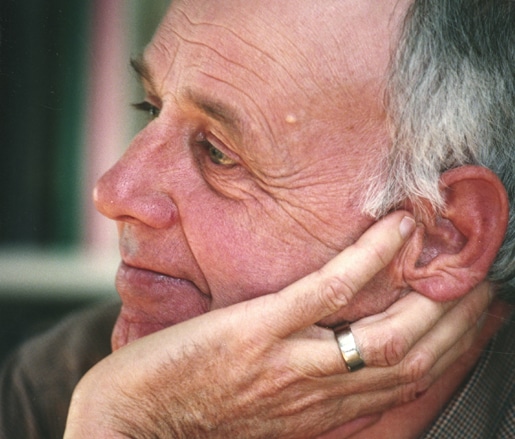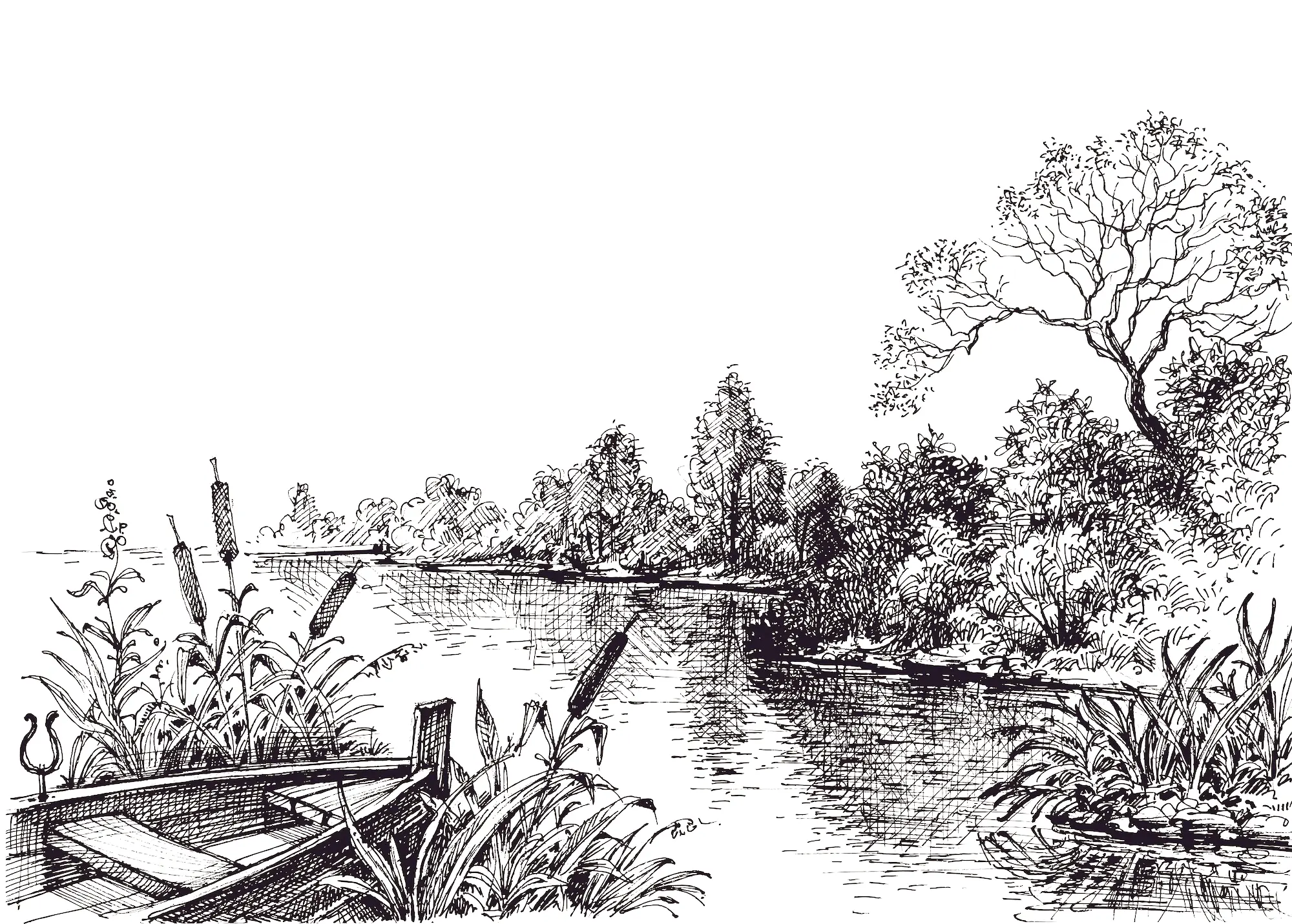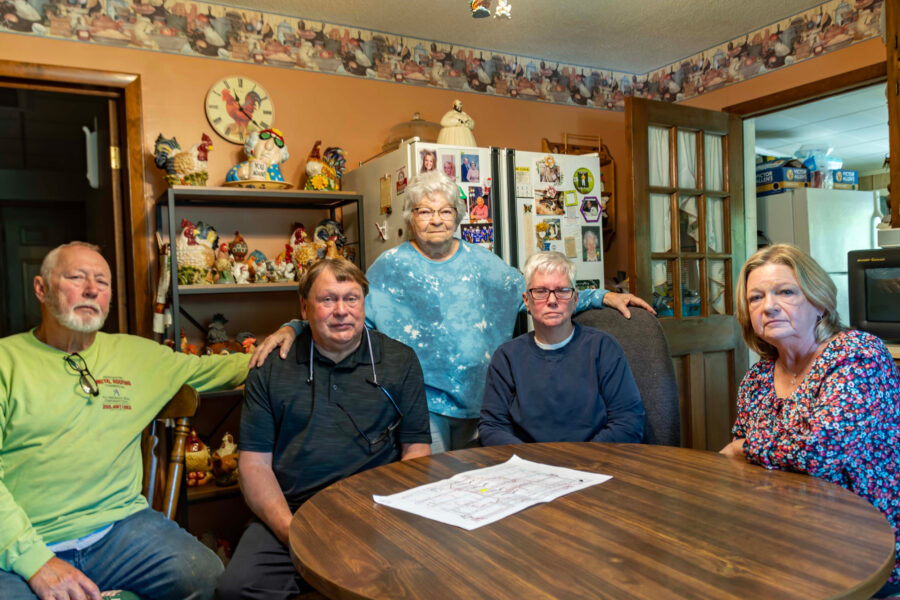It’s one of those places where if you don’t know where you’re going, you’ll miss the entrance. But, given the right winter weekend in this part of Wisconsin’s Northwoods, it’s also where you would find one of the world’s most prestigious snowmobile races.
High-Speed Thrills and Warm Weather Blues at the ‘Snowmobile Capital of the World’
As snowmobile racers compete for the title of world champion in Eagle River, Wisconsin, warm weather signals an uncertain future for the sport and its community
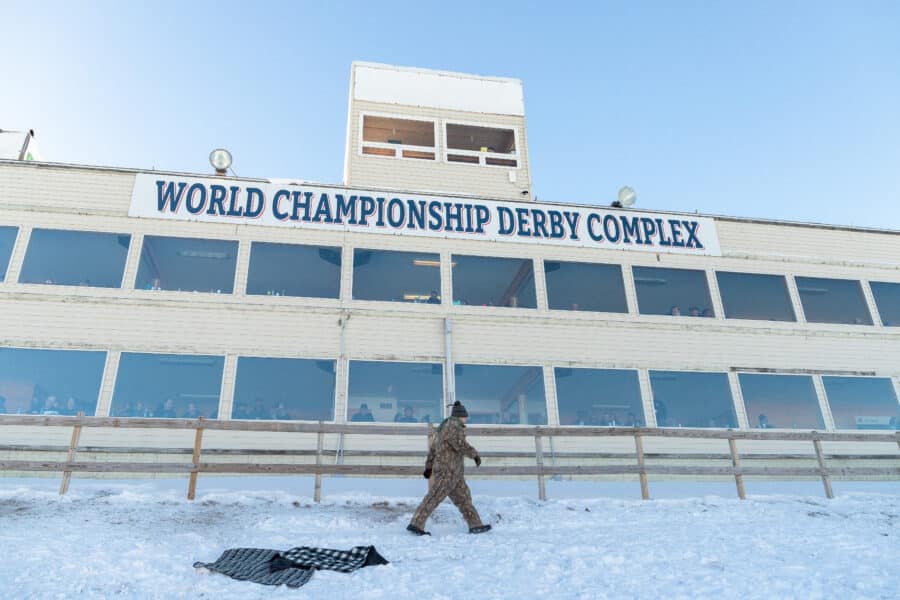

Near the small town of Eagle River, Wisconsin (population 1,600), more than 500 miles of groomed trails weave through the Northwoods, granting it the name of the Snowmobile Capital of the World.
Eagle River is the home to the World Championship Snowmobile Derby, considered one of the most prestigious snowmobile competitions in the sport. Each year, hundreds of racers come from across the world to compete in multi-day races from Friday, skidding across 15-inch-thick ice at speeds up to 100 miles per hour, on a half-mile banked oval track, all for a shot at the title of world champion.
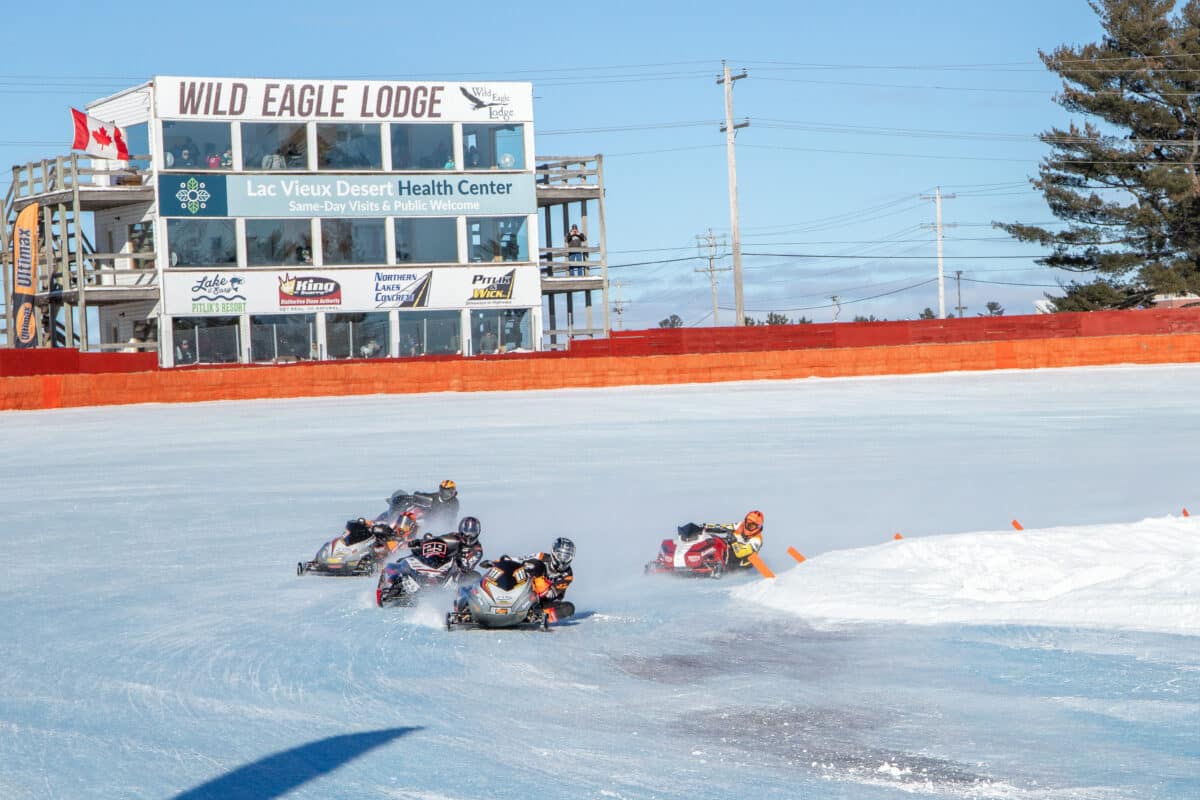
Throughout the weekend, thousands of spectators arrive at Eagle River’s 31-acre World Championship Derby Complex, lined up in snowsuits and clutching warm beverages to watch brothers, sisters, husbands, wives and friends win, lose, crash or run out of gas merely two feet away from the checkered flag.
A quick history
Long before the sleek, muscular designs of the vehicles at today’s championship races, snowmobiles were bulky, inefficient machines. In the 1900s, over-the-snow vehicles, as they were called, were made from bicycles on runners, steam-propelled sleighs and Model T Fords modified with tractor treads and skis.
By the 1920s, the first motorized snowmobile prototypes took shape, thanks to two innovators—Joseph-Armand Bombardier and Carl Eliason. In 1922, Bombardier’s fan-propelled “oversnow” machine hit rural Québec, while, in 1924, Carl Eliason, a Wisconsin-native, made his prototype by mounting a two-cylinder motorcycle engine on a long toboggan, attaching skis under the front and a steering device at the rear. By 1927, Eliason patented his prototype as the first American single-passenger motorized snow vehicle. These early snowmobiles served those who lived and worked in remote rural areas; buyers included ambulance drivers, country doctors and priests.
One of the first races using these early snowmobile models was held in 1926 near Three Lakes, Wisconsin, only 10 miles south of Eagle River, making the region the birthplace of modern snowmobile racing.
By the 1960s, snowmobiles had evolved significantly, as did their recreational use. Racers began competing on fairgrounds and farm fields, where crowds would stand on top of snowbanks to watch until sunset.
In 1964, local innkeeper John Alward, his wife Betty and their friend Walter Goldsworthy established the first snowmobile championship race, a cross country circuit around Dollar Lake. Alward had an itch to go racing, and he decided he couldn’t be the only one with the need for speed.
And he wasn’t wrong. By 1968, the derby had been trademarked the World Championship Snowmobile Derby and was broadcast on ABC’s Wide World of Sports, attracting thousands of spectators that included several Green Bay Packers fresh off their Super Bowl II victory.
Today, the derby has permanent buildings along the perimeter of the track, where visitors can purchase private booths called “hot seats” for $186 per day per person, complete with a bar and restroom. Or, folks can stand outside for a closer look and a much cheaper ticket ($31 per day). There’s a 12,000-square-foot exhibit hall replete with a gift shop and vendors selling food and snowmobile gear.
Approximately 40,000 spectators visit the race from across the world. Typically, there are more than 60 different races of various classes throughout the weekend, from professional stock snowmobilers to junior racing.
Sunday’s 25-lap Formula III World Championship Snowmobile Derby features the top 12 racers who have been narrowed down through the weekend from a field of more than 36 racers. After a series of time trials and heat races on Friday, the winner of a 10-lap special qualifying race on Friday night moves directly to the pole position—the front row starting spot—in Sunday’s World Championship race.
On Saturday, the remaining field competes in a series of heats, quarterfinals, semifinals and consolation races to make it into Sunday’s race.
And, like any championship event, Sunday’s winner sprays his fill of champagne.
Born to race
“I’ve had some good seasons these last few years,” says Matt Goede, from New Germany, Minnesota.
Goede, 35, was this year’s fastest man on the ice in the 61st running of the World Championship Snowmobile Derby. On Friday, Goede set the fastest time in the qualifying event and won the pole position at Friday night’s Sweet Sixteen race. On Sunday, Goede jockeyed through rough conditions and grabbed the lead on the first lap, never to look back. He was crowned World Snowmobile Champion after his victory, becoming the 10th driver all-time to win back-to-back titles.
Like many racers living up north, Goede started young. His first sled was a 1973 340 Colt. He started entry-level racing in 2006 with vintage sleds.
In 2017, Goede was racing in Ironwood, Minnesota, when a mechanical error caused his sled to suddenly slow down. Sleds crashed into him at 80 miles per hour. After a shattered kneecap, broken pelvis, dislocated elbow, broken toes and several compound fractures, Goede has made a miraculous comeback in recent years.
Stephen Town, from Traverse City, Michigan, got into snowmobile riding and racing because of his parents, both racers themselves. The Towns are a riding family. Along with his two brothers, Matt and Tyler, Stephen says that he began racing vintage sleds at 16 and has raced since then. “We are a tight crew.”
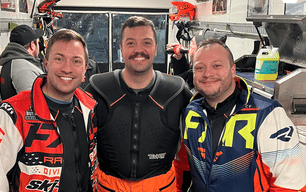
Tyler Town would go on to finish 9th in the World Championship race.
Ski-Doo sponsors the Town brothers’ team, called Town Brothers Racing, and the trio usually race one of Ski-Doo’s Snowcross sleds, which are meant to be raced in the snow. But at Eagle River, the track is an oval of pure ice—called “ice oval” racing—so the brothers modify their sleds for the track, removing the shocks, suspension, track and spindles. “The oval sleds are much lower to the ice to help them get around the corners faster,” says Stephen Town. At high speeds, riders must turn using their entire body or risk flying off the track.
Matt and Stephen Town participated in the 4th World Championship Pro Enduro race, a 130-lap endurance race that follows the World Championship Derby later in the day. Drivers race as a two-person team and switch off when the other needs a break or rest. After a mechanical issue on lap 23, they were out of the race.
Fashion-forward at the races
As for riding gear, racers usually wear leather gloves that are a little thicker to keep their hands warm. Goede says that some people wear thinner gloves and have heated handlebars.
Every driver wears a helmet that has to be a certain rating, along with a neck brace that protects their head from moving front to back in case of a sudden impact. Every driver wears a chest protector under their jacket and shin guards. Goggles, snow bibs, boots and a jacket help keep the skin covered.
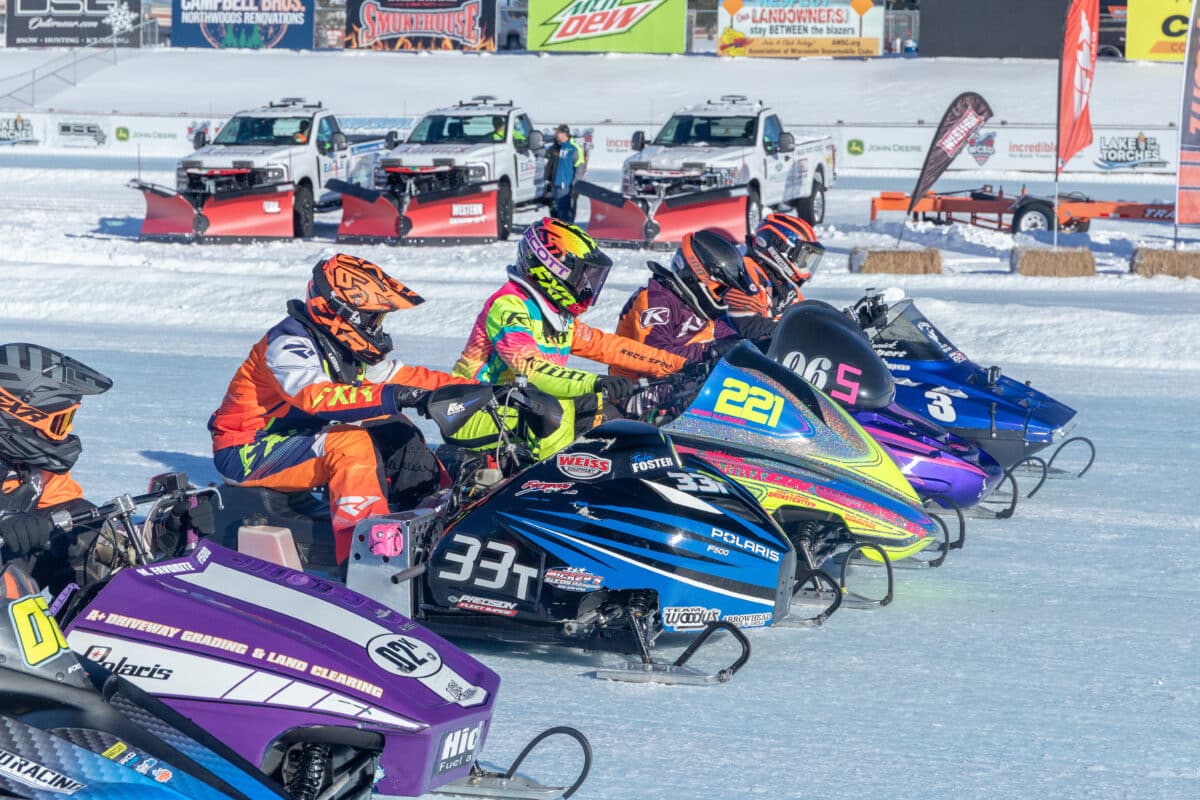
Racers admit that under all those layers, they usually get a little hot. Racing is a physical sport, forcing the body and mind to heat up.
Warm weather blues
This year, it isn’t just the racers who were heating up. The entire Midwestern landscape has seen record warm temperatures this year—the average statewide temperature in Wisconsin was nearly 10 degrees above normal from December through February.
Building a track requires heavy lifting. It usually takes a couple of weeks to build up the ice on the track, and warm weather can complicate the process quickly. (The track at Eagle River uses 2 million gallons of water to create 15 inches of solid ice for the track).
In 2023, the Town team helped host a race with the Midwest International Racing Association (MIRA) in Traverse City but had to cancel it because of warm weather. “Our team had started to build the track twice, and it melted before we could race on it,” says Stephen Town. “It has made us appreciate every event we are able to race and appreciate anyone who helps to build the race tracks.”
Just as Wisconsin’s Northwoods rely on snow as part of its seasonal cycle, residents depend on icy winters for an influx of money. The lack of snowfall during the peak of the area’s tourist season has caused financial and economic strain across the Northwoods.
The January weekend of the Championship Derby wasn’t exactly a heat wave—it was a whopping high of 16 degrees. The week before saw highs in the 20s and 30s, but a blast of arctic cold from the polar vortex a few days before the race—one day saw a high of 1 degree—solidified racing conditions. It seemed like the derby happened in the sweet spot of this year’s winter. Bars and local shops have been hammered financially, with many open for limited hours or closing up entirely for the season.
Rick Tiede is the marketing director for Woody’s Traction, a second- and third-generation family-owned business based in Michigan and one of the industry’s top traction manufacturers (the metal spokes or carbide spikes that go into a snowmobile’s track). Woody’s sponsors anywhere from eight to 1,100 racers a year. That lower-than-average snowfall over the past two years has dealt a “big hit,” says Tiede. “A guy doesn’t wanna walk past his $20,000 snowmobile that doesn’t get used for the year.”
Nevertheless, Tiede says, Woody’s will make it through.
It’s a sentiment echoed by many in the Badger state.
Amid this uncertainty, Northwoods residents often turn to the Finnish concept of sisu. It’s a term that means sustaining a rational mind in the wake of adversity, a testament at once to the challenges Wisconsinites face and their determination to carry forward.

S. Nicole Lane has been a freelancer for the past ten years and is the editor of Healthnews. She lives on Chicago's South Side.
Have thoughts or reactions to this or any other piece that you’d like to share? Send us a note with the Letter to the Editor form.
Want to republish this story? Check out our guide.
More from Barn Raiser
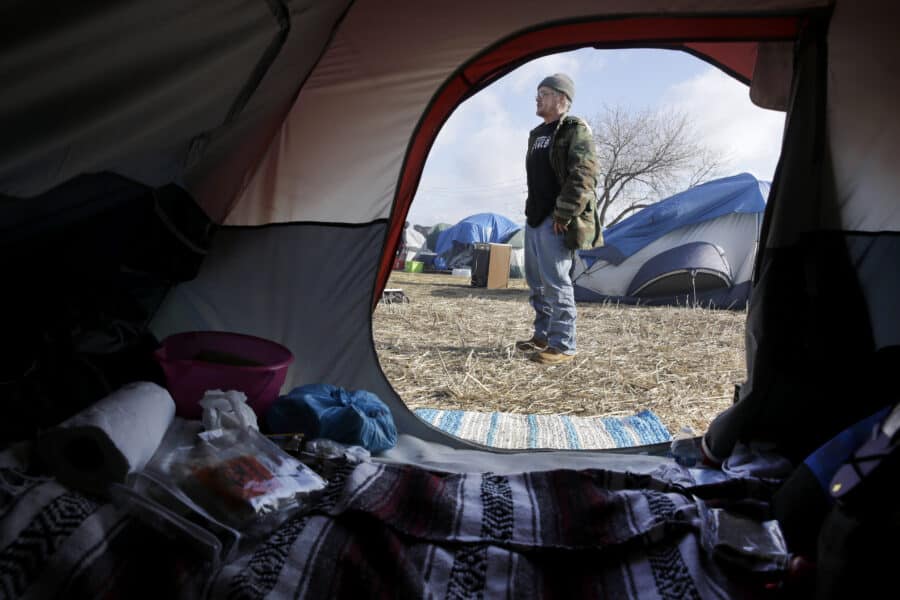
Taking Stock of Rural America’s ‘Hidden’ Homeless
